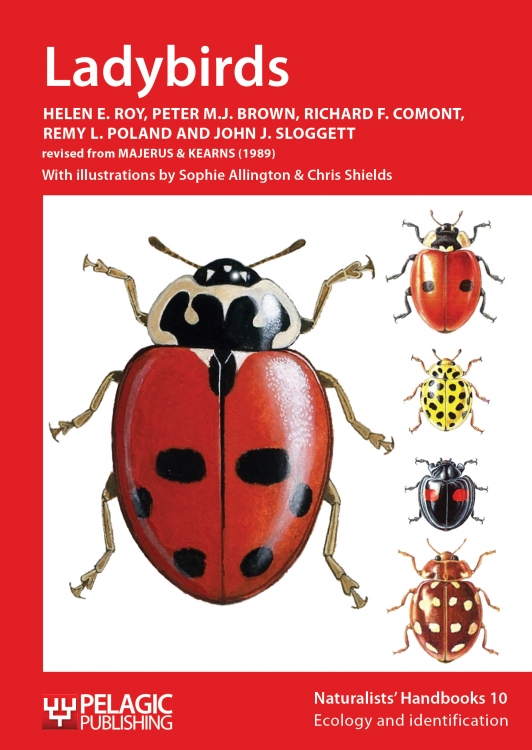 The newly released 2nd edition of Ladybirds is number 10 in Pelagic Publishing’s Naturalist’s Handbook series. If this series sounds familiar it’s because I reviewed the Bumblebees book here and found it a phenomenal resource for learning about the life history of bumblebees. Thus I was very excited to receive a copy of Ladybirds and hoped it would be just as enlightening about a very common insect. I found I wasn’t disappointed and learned a great deal about an insect which we often overlook simply because they’re everywhere. Like Bumblebees it focuses on British species, but the first few chapters are about the general life history of lady beetles and they are full of fascinating information. In addition, there are a couple of species which have been introduced to North America and are covered in detail in this book including the Asian Lady Beetle.
The newly released 2nd edition of Ladybirds is number 10 in Pelagic Publishing’s Naturalist’s Handbook series. If this series sounds familiar it’s because I reviewed the Bumblebees book here and found it a phenomenal resource for learning about the life history of bumblebees. Thus I was very excited to receive a copy of Ladybirds and hoped it would be just as enlightening about a very common insect. I found I wasn’t disappointed and learned a great deal about an insect which we often overlook simply because they’re everywhere. Like Bumblebees it focuses on British species, but the first few chapters are about the general life history of lady beetles and they are full of fascinating information. In addition, there are a couple of species which have been introduced to North America and are covered in detail in this book including the Asian Lady Beetle.
If you live in the U.K. you’ll find this a very valuable resource as it not only has plates and descriptions of all British lady beetles, it also includes a detailed key and distribution maps.
The book is written for not only for entomologists but also naturalists and it’s a worthy book to add to any personal library. The book starts off with a look at the life history of lady beetles and discusses their lives in relation to the calender year. It also discusses eggs, pupae and my favorite phase, the larvae. While we wax poetics about the metamorphosis of butterflies, lady beetles are just as interesting and perhaps more so when you throw in sibling cannibalism, riding aphids like a horse while snacking on their innards and even brutally using an aphids own leg as a straw with which to suck them dry.
Discussion of lady beetles and their environment is also enlightening as many species vary widely where they live, breed and shelter. Some species prefer wetland habitats while others prefer woodlands and yet others grasslands. Like butterflies, lady beetles often use host plants where they find their preferred aphid species. There is also a rather complex relationship between different species of aphids and lady beetles. Some aphids are toxic to certain species of lady beetles, but other species will happily chow down on them with no need of an antacid. This may be surprising to gardeners, but there are times when there are not enough aphids for lady beetles to eat. And did you know that some lady beetles feed on mildew?
For the habitat designer, there’s a wealth of information about lady beetles’ preferred habitats including where they prefer to overwinter. This valuable information could help many designers or backyard gardeners create habitat suitable for the entire lifecycle of the lady beetle. By knowing what they eat, where they lay eggs and where they take shelter in the winter, we can easily add these elements to our designs. For example many species overwinter in leaf litter, so simply leaving a debris pile could help provide winter shelter.
Additional information in the book includes population and evolutionary biology and great information about collecting, housing and keeping lady beetles for study. Also, for the entomologist, or very dedicated naturalist, there are tips on keeping a collection of lady beetles and how to examine them under a microscope.
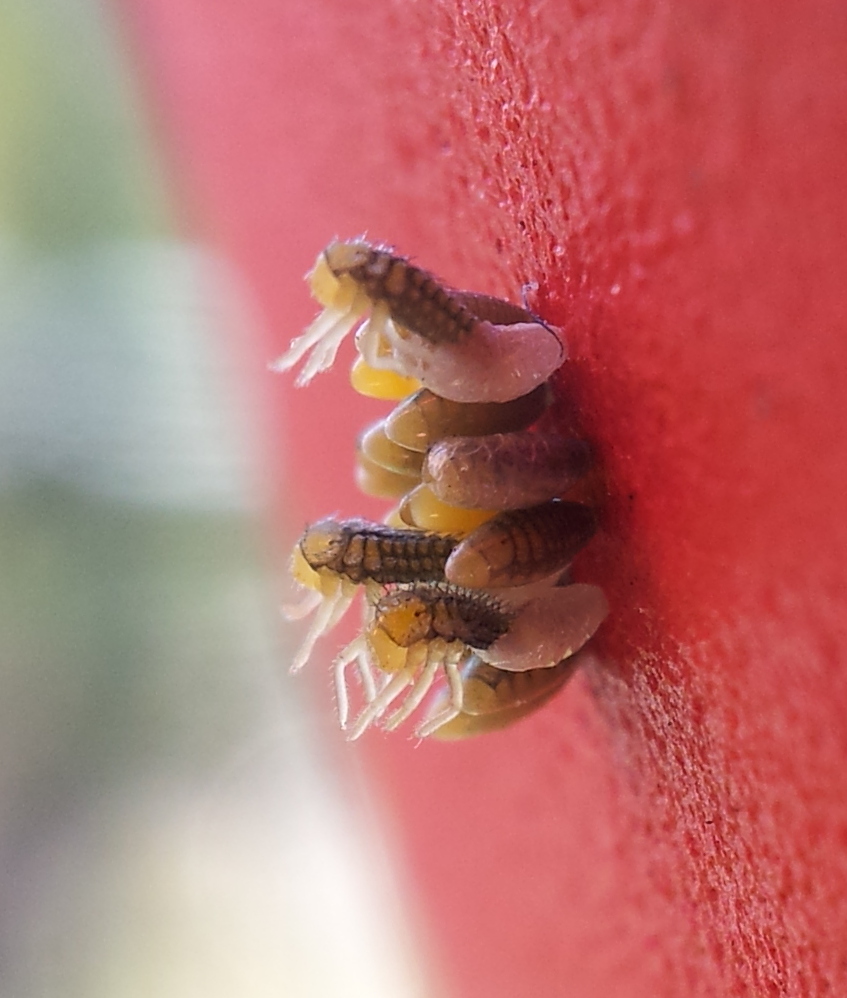
Lady Beetles Emerging from Eggs
All while reading through this book, cute images of lady beetles on baby clothes, umbrellas, boots, tattoos and so on kept flashing through my mind. If only they knew the real side of lady beetles. They live a very different life from what the cute children’s books would have us believe. Reading this book is like reading a sci-fi horror novel. Sibling cannibalism aside, when aphids become scarce, some lady beetles will readily dine on other species of lady beetles. The larvae and adults are viscous predators. They will also feed on other aphid predators such as lacewing larvae, but to be fair, sometimes the tables will turn and the lacewing will eat the lady beetle larvae. This isn’t even considering parasitism of lady beetles. On the gentler end, some parasites simply prevent lady beetles from reaching maturity. On the harsher side, a certain wasp lays eggs by stabbing the lady beetle and when the eggs hatch, a battle royale plays out inside the lady beetle with only one larva emerging victorious and reaching the second instar. This larva then renders the lady beetle unable to reach maturity and emerges out of the lady beetle leaving it partially paralyzed. It then spins a cocoon under the poor lady beetle, trapping the paralyzed beetle and leaving it starving for up to a week until it dies. I won’t tell you what some flies do to the lady beetles, but it makes you wonder if Ridley Scott got his inspiration for Aliens from them.
For a slender book it packs a whole lot of information. I thought I knew a little bit about lady beetles as I’d watched them through their entire life cycle on my balcony, but I learned way more than I expected with this book. I dare you to read it and not have your view of lady beetles dramatically changed.
Thank you to Pelagic Publishing for providing me a copy to review.
Ladybirds (Naturalists’ Handbooks 10, Ecology and Identification)
By Helen E. Roy, Peter M.J. Brown, Richard F. Comont, Remy L. Poland & John J. Sloggett
Revised from Majerus & Kearns (1989)

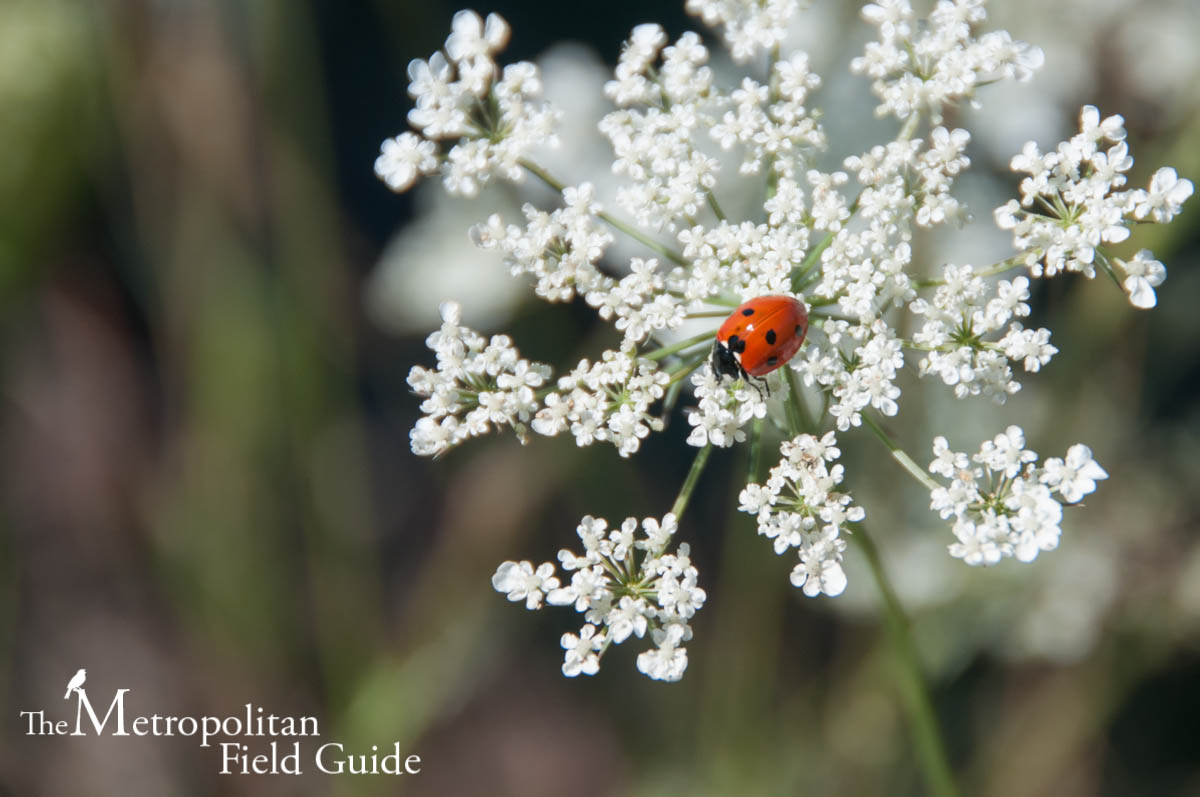

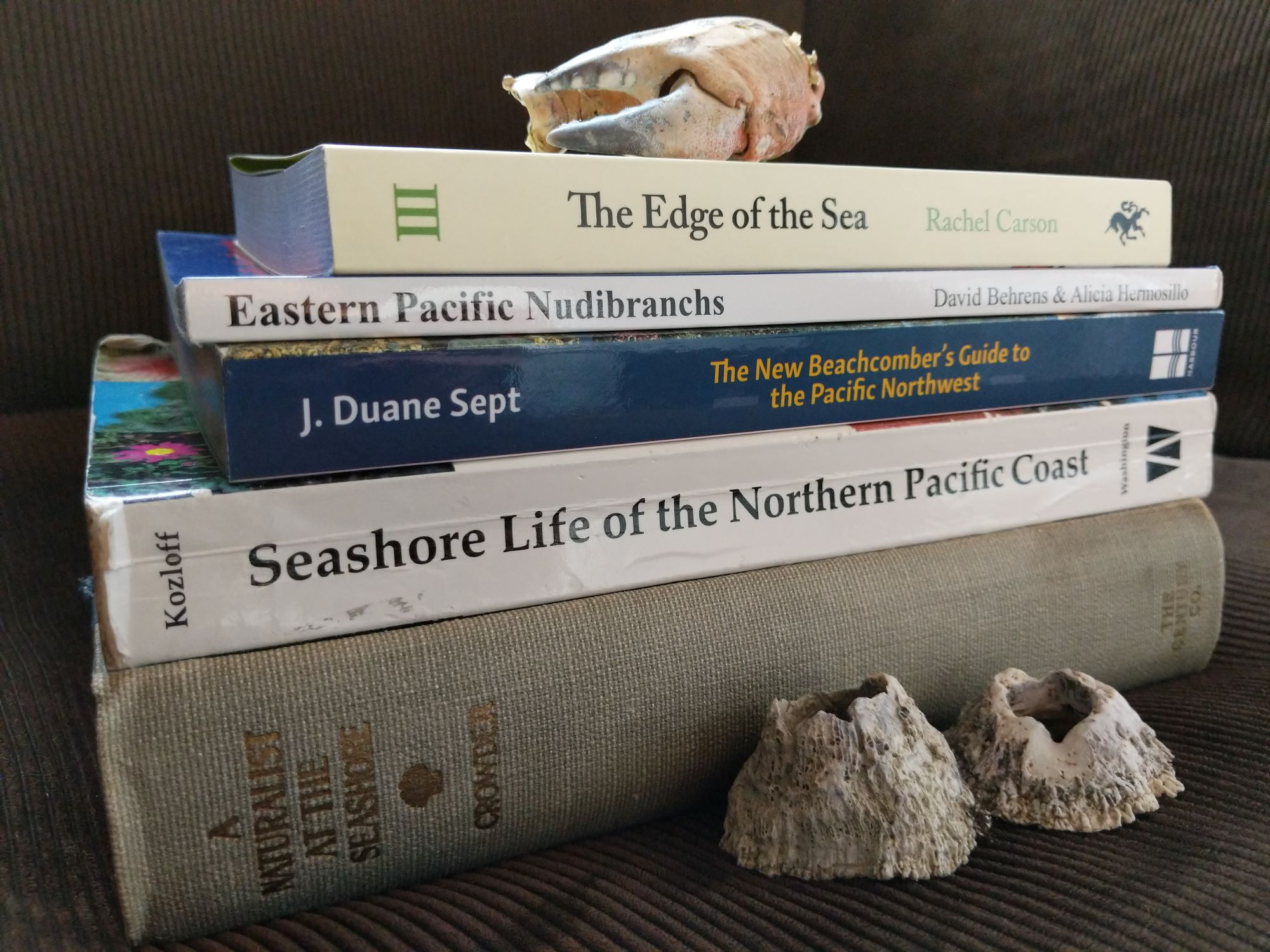
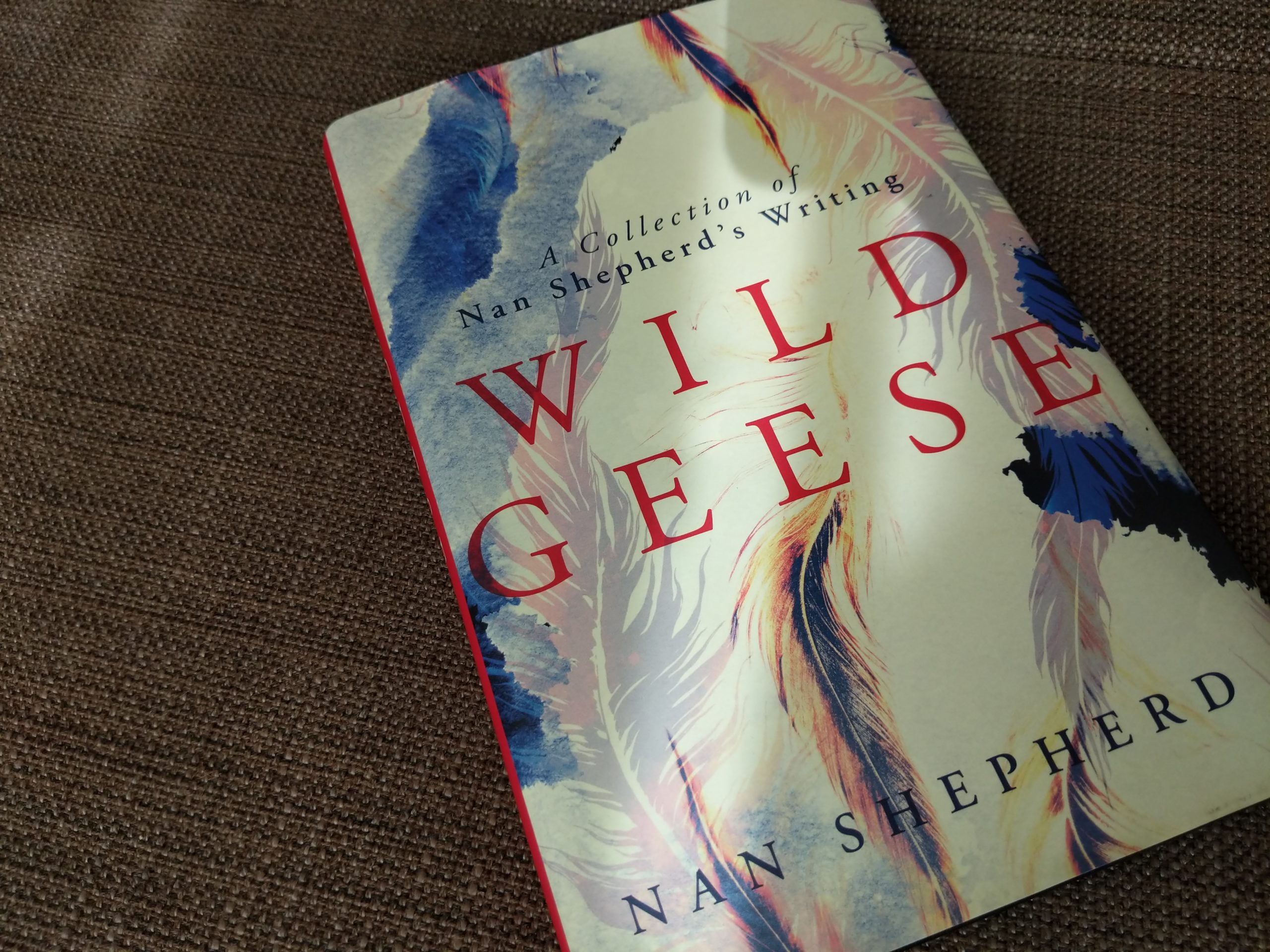
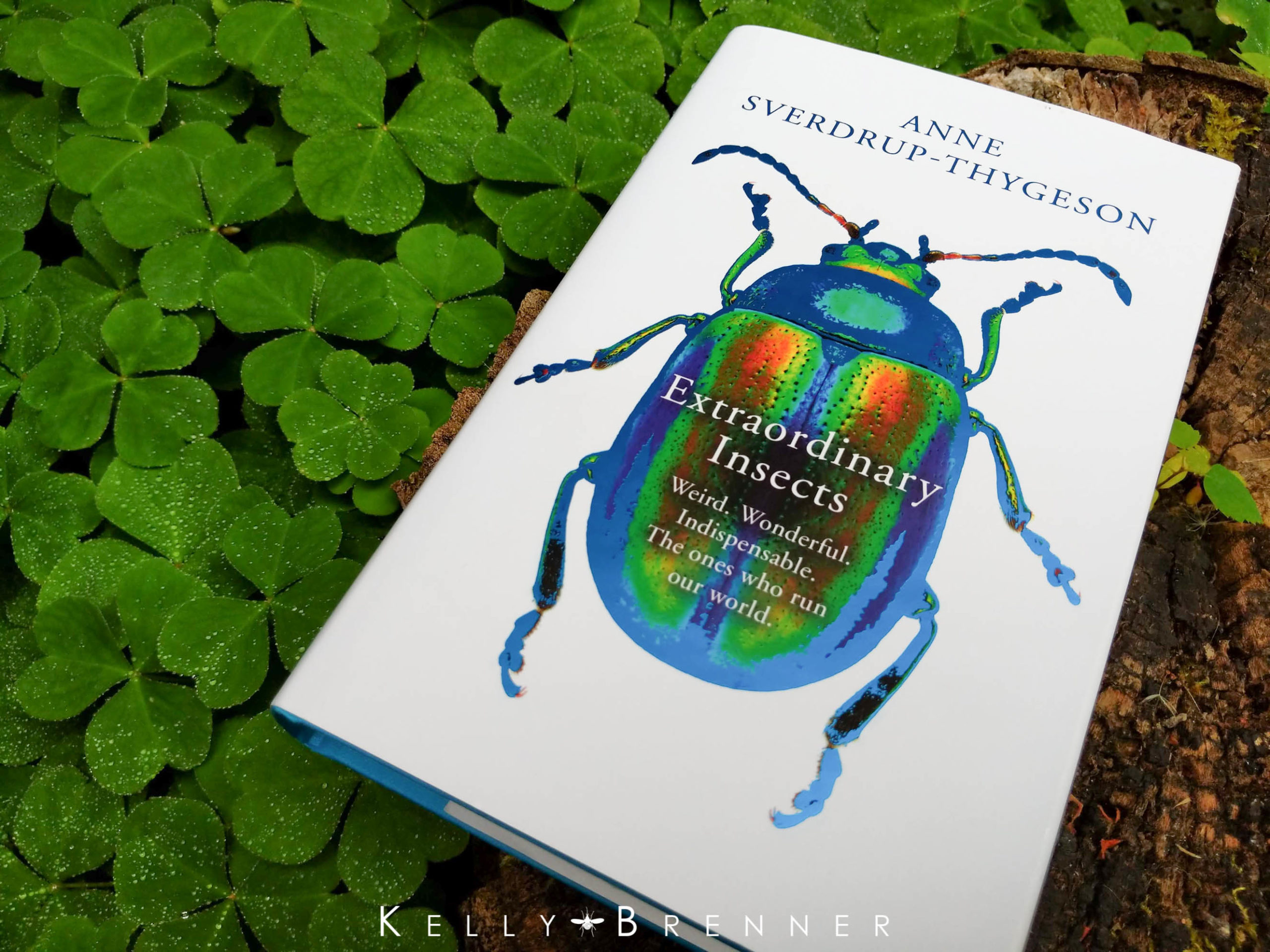

Fascinating!!! I never had a clue. So much to learn, so little time. ☺